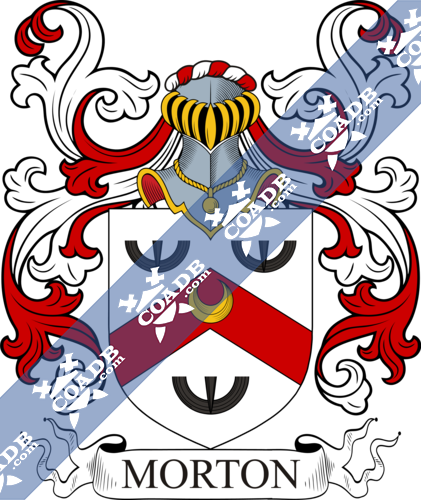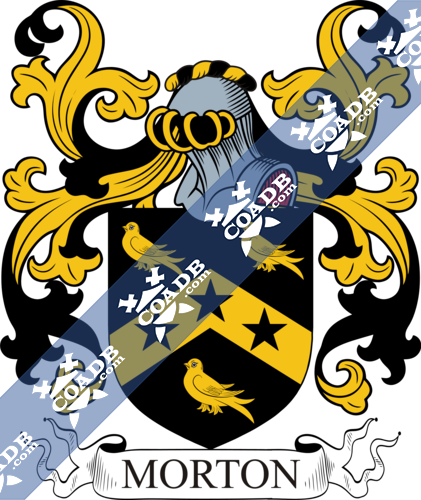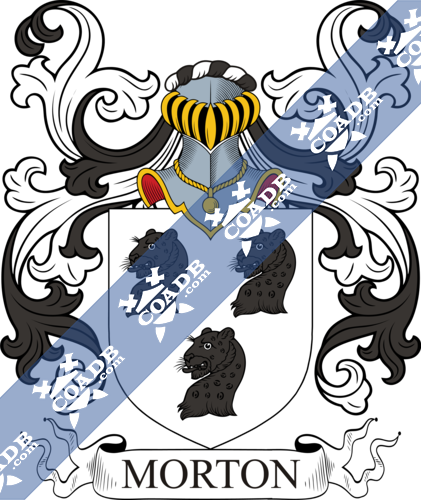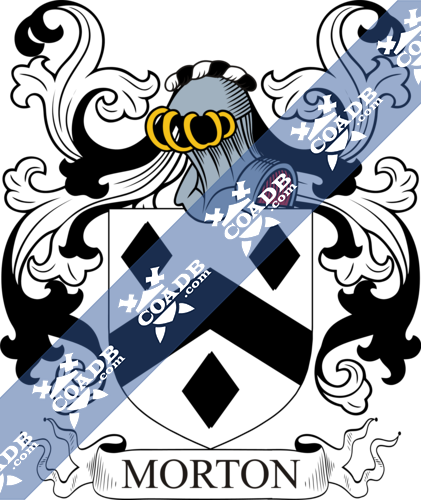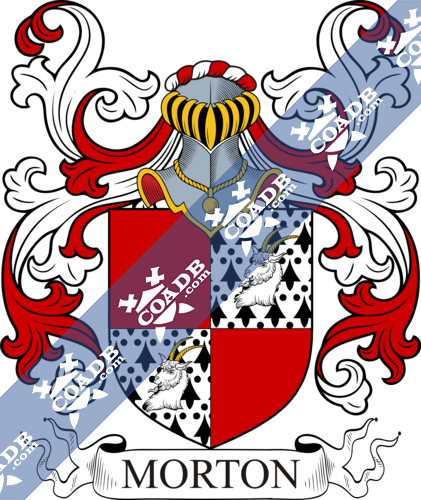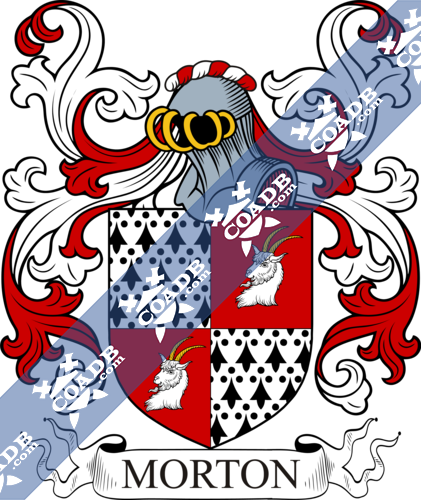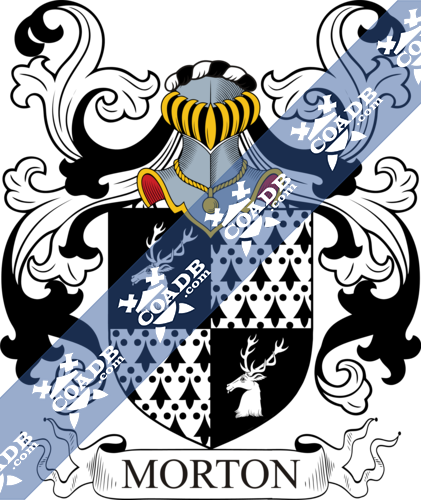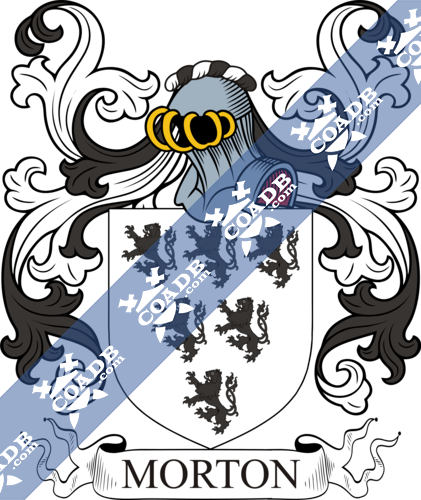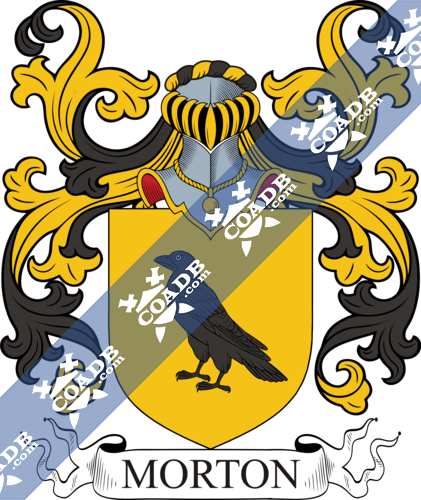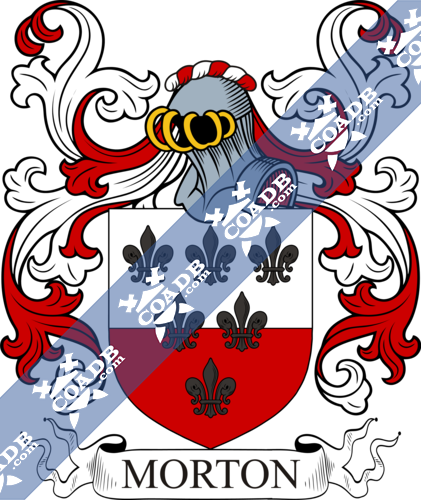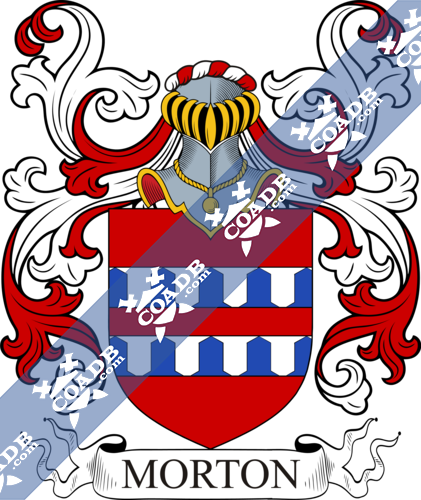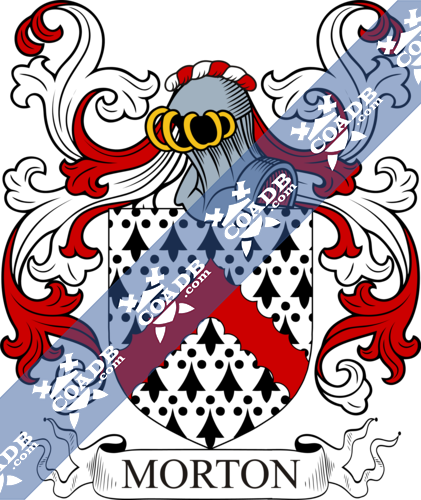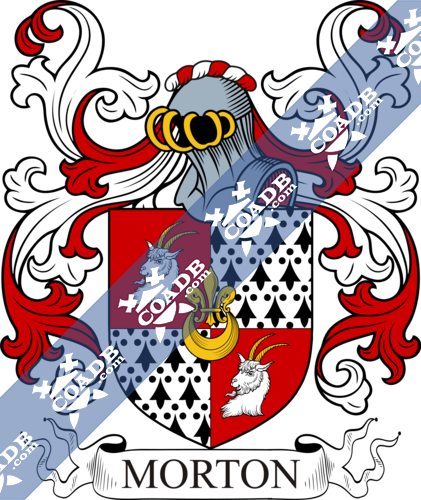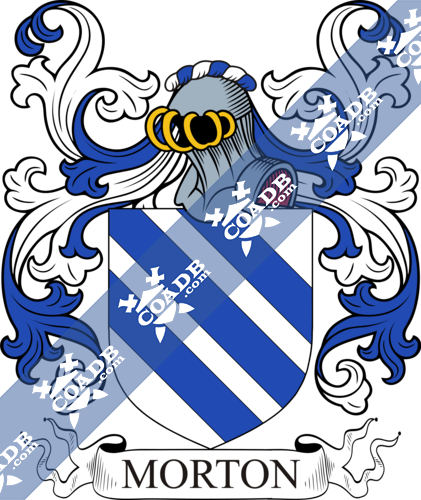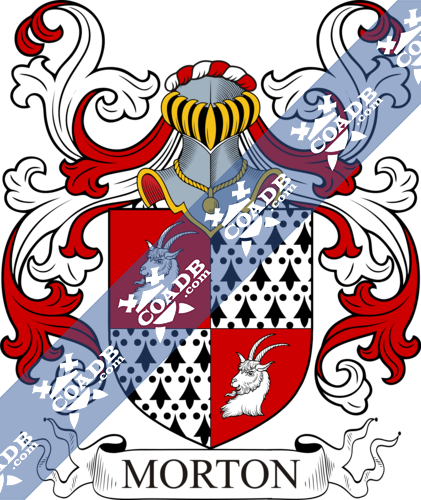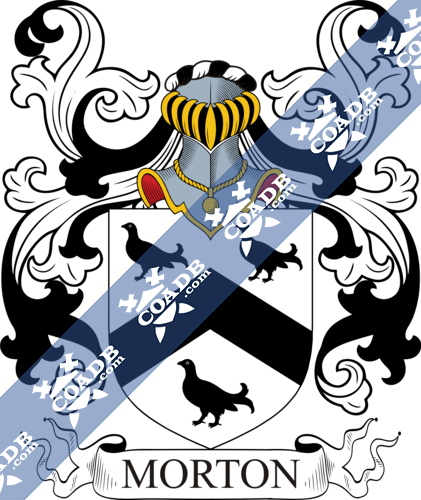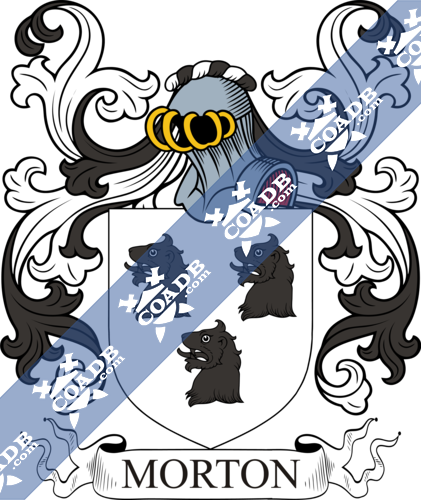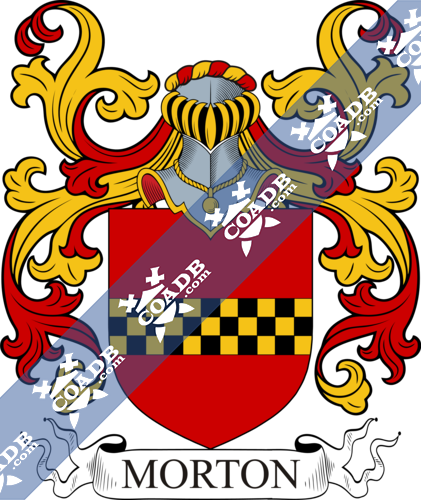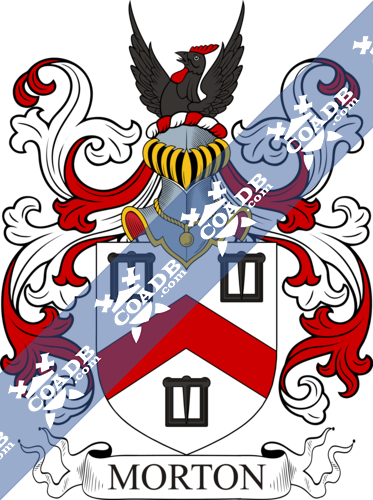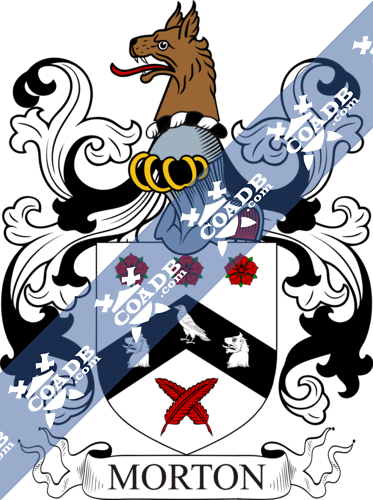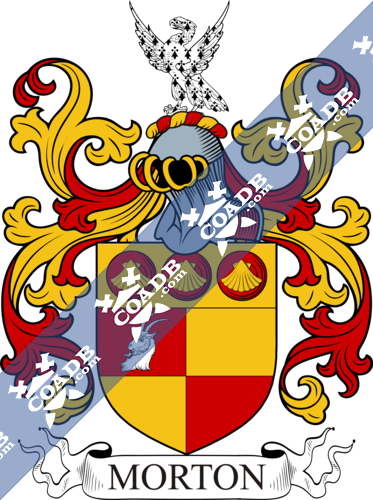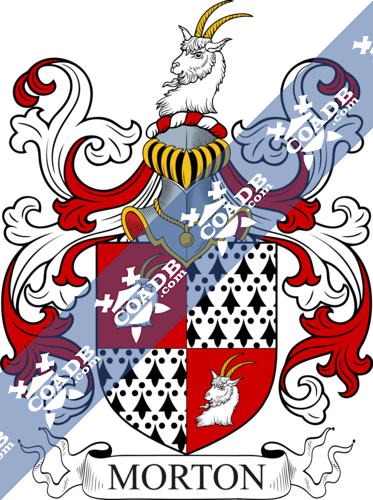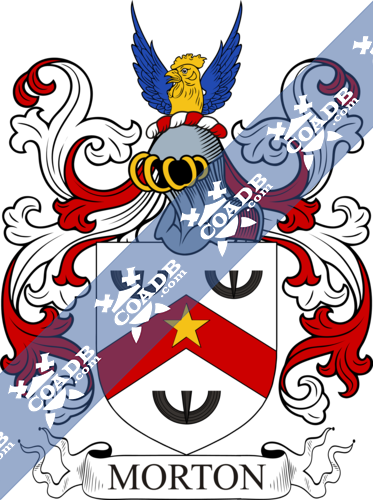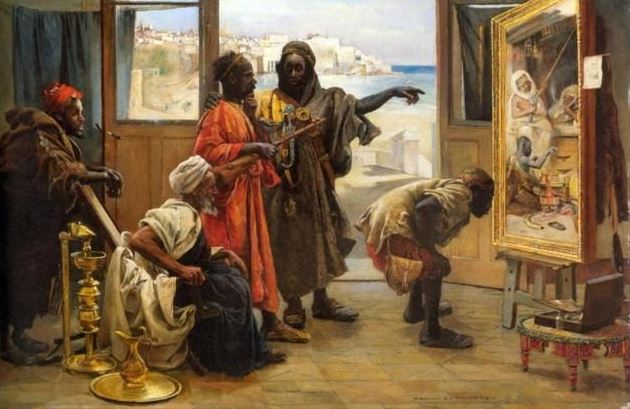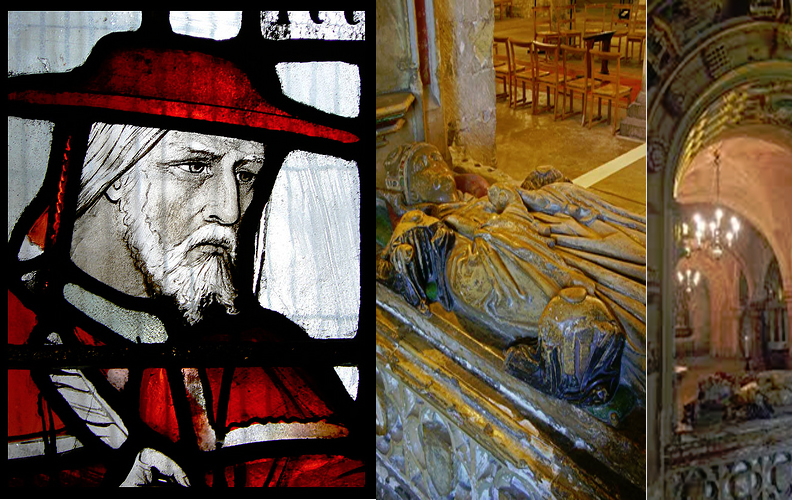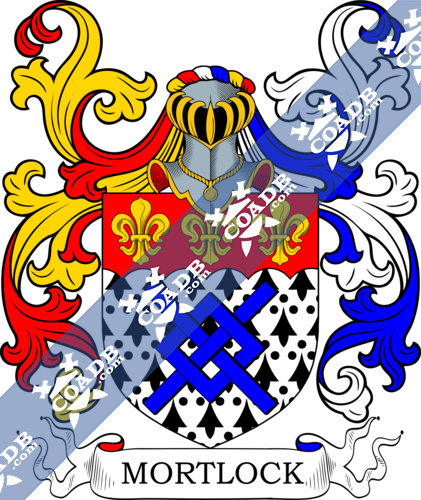Morton Family Crest, Coat of Arms and Name History

Morton Coat of Arms Gallery
Don’t know which Coat of Arms is yours?
We can do a genealogical research. Find out the exact history of your family!
Learn MoreSurname Name Meaning, Origin, and Etymology
This is a local surname meaning “of Morton”, meaning the moor-ton or moor town, the enclosure or farm on the moor. There are a plethora of places bearing this name, for examples, hamlets and parishes in Derby, Lincoln, Nottingham, York, Worcester, Warwick, Durham, Hereford, Norfolk, and Northampton. Many such locales are recorded in the Domesday Book of 1086, which was a census of England and Wales. One source states this is of Gaelic origins and it referred to someone who came from the parish of Morton in Nithsdale, Dumfriesshire, Scotland. The word mor means big or great, whereas dun or ton means a hill. One source the family was first found in Cheshire, and later moved to Dumfries, Scotland. Another source claims the Cheshire family descends from Robert, Count of Mortain, who was a half-brother to William the Conqueror. There is a title called “The Earl of Morton” which has been possessed by the Douglas family since the fifteenth century AD.
Spelling Variations
Common spelling variants include Myrton, Moorton, Morden, Mordin, Mordon, Mortin, Mortan, and Mortyn. It should be noted there is also a different surname that uses this last name as its base: Throgmorton. It is also a Swedish variant of the name Martin. It is also an Anglicized version of several Jewish surnames that are spelled or sound similar.
Early Bearers of the Surname
The earliest person documented bearing this last name was Robert de Mortone who was recorded in the Pipe Rolls of Wiltshire in 1130 AD. Thomas Mirton was recorded in 1422 AD. Hugh de Mortun was recorded in Scotland in 1204 AD. The Hundred Rolls of 1273 AD, a census of Wales and England, known in Latin as Rotuli Hundredorum, documents four people bearing this surname: Robert de Morton in county Notts, Egidus de Morton in county Northampton, Richard de Morton in county Oxford, and Felicia de Morton. The Testa de Neville sive Liber Feodorum documents Alicia de Morton in county York and Michael de Morton in county Salop. The Poll Tax of Yorkshire in 1379 AD records one Rogerus de Morton and Johannes de Morton. Manser de Morton is recorded in county Huntingdonshire in the Placita de Quo Warranto during the reign of King Edward I of England. John Morton, of Leicester, was listed in the Register of the University of Oxford in 1594.
History, Genealogy, and Ancestry
John Morton was born in Kent, England in 1650. He married a woman named Joane in 1682 at St. John’s Church, Henrico, Virginia. Together they had nine children: Winifred, Josiah, John, Thomas, Mary, Richard, Joseph, William, and James. His son Joseph was born in Henrico, VA in 1693 and married a woman named Elizabeth. Together they had issue: Eva Anne, Martha, Jane, John, Jehu, and Joseph. His son John Morton was born in 1733. He married Amy Johnson in 1752 and later Lucinda Blakely in 1777. He had the following children: Joseph, Jehu, Mary, John, Isaiah, Sarah, Leviney, Amy, Jean, Susannah, John, James, Martha, Armistead, Nancy, Joab, Hezekiah, and Richard II. His son Isaiah was born in 1763 and married a woman named Phoebe and he died in 1815.
William Morton was born in 1642 in England. He married Mary Burnham in 1670 in Hartford, Connecticut. They left the following issue: William, Mary (Colt), Ann, Thomas, John, Katherine, Samuel, and Sarah. He died in 1712. His son Thomas was born in 1680 and he had a daughter named Hannah Morton.
Early American and New World Settlers
The book “Genealogical Guide to the Early Settlers of America” discusses nine bearers of this last name: 1) Charles Morton of Charleston, eldest son of Reverend Nicholas who descended from an ancient family at Morton in county Nottinghamshire, was born in 1626 in Cornwall and went to Boston in 1696 and had a nephew Nicholas who went to Harvard College, 2) George Morton of Plymouth who was born in Austerfield in Yorkshire and was baptized in 1599. He came to the New World in 1623 aboard a ship named Ann, and in 1612, at Leyden, he married Juliana, daughter of Alexander Carpenter, 3) John Morton of Boston who had a wife named Martha had a son named John, 4) John Morton of Salem who was a petitioner against imposts in 1668, 5) Nathaniel Morton, of Plymouth, was the eldest son of George and was born in England in 1613. He came as a freeman to American in 1635 and married Lydia Cooper. They had issue together: Remember (1637), Mercy, Lydia, Elizabeth (1652), Johanna (1654), Hannah, Eliezer, and Nathanel. He was secretary of the colony from 1645-1685, 6) Richard Morton of Hartford, a blacksmith who was a freeman in 1669. He had children named Richard, Thomas, John, Joseph, John, Abraham, Elizabeth, Ebenezer, and Jonathan. He moved to Hatfield, 7) Thomas Morton of Plymouth who came aboard the Ann in 1623, 8) Thomas Morton on Braintree who was the pettifogger of Clifford’s Inn in London, came to the New World in 1622. He had a plantation called Merry Mount, and he was seized and sent home in 1629 for causes set down by Governor Bradford. He came back and was sent off again by Governor Winthrop and he published a book called New England Canaan, 9) William Morton of New London who was one of the earliest settlers there in 1646, who was constable in 1658 and died in 1668 without issue, and 10) William Morton of Windsor who was a freeman in 1669 and had children named William, John, and Thomas.
Henry Samuel Morton was of Hoboken New Jersey ad was the son of Henry Morton (1836-1902). He was born in 1874 and was a patent lawyer. He married Sarah, daughter of William White Bronson Jr. of Philadelphia, and great-great granddaughters of Reverend William White, the first Episcopal Bishop of the United States. He had a son named Henry in 1906. His arms were blazoned as follows: Or, a lion rampant sable. George Morton was born in 1585 at Austerfield and died in Plymouth, MA, in 1624 and he bore the following arms: Argent, a chevron between three mullets gules.
Thomas Morton left England or Holland in 1621 and arrived at New Plymouth, coming on a ship called the Fortune. Henry Morton came in 1635 to New England from the port of London aboard the Abigall. Rowland Morton came to St. Christopher’s aboard the Mathew in 1635. Mathew Morton came aboard the Globe in August 1635. Nicholas Morton came to Virginia aboard the Safety in 1635. Joseph Morton came aboard the William and John in September 1635. William Morton came in 1620 at the age of 20 aboard the Margett and John. Edward Morton was recorded as a servant of Captain William Marshall in the Barbados. A one Daniel Morton was buried in 1678-9 in St. George’s parish in Barbados.
Other early settlers included Ralph Morton (1607 Jamestown, VA), Julian Carpenter Morton (Plymouth, MA 1623), Lawrance Morton (Pennsylvania 1708), and Paul Morton (South Carolina 1755). One of the earliest settlers in Canada with this surname was Mary Morton, who came to New Brunswick in 1833 aboard a ship called Dorcas Savage, which came from the city of Belfast in Ireland.
Mottoes
The Morton family motto is 1) Perseverando, meaning “By persevering”, 2) A te pro te, meaning “From thee, for thee”, 3) Lock sicker, meaning “Be sure”, 4) (of Scarborough) Spes non fracta, meaning “My hope is not broken”.
Notables
Famous people with this last name include: 1) Dudley Walker Morton (1907-1943) who was a commander of a submarine in the United States during World War II, 2) Johnnie James Morton Jr. (born 1971) who was an American football player (wide receiver) that plays on the Detroit Lions, Kansas City Chiefs, and San Francisco 49ers, 3) Marcus Morton (1784-1864) who was the 16th and 18th Governor of the state of Massachusetts, and 4) Oliver Hazard Perry Throck Morton (1823-1877) who was a Lieutenant Governor, Governor, and Senator of/from Indiana.
Blazons & Genealogy Notes
2) (co. Chester). Ar. a greyhound courant sa. collared vert, rimmed gold. Crest—A greyhound’s head ar. collared vert, rimmed gold.
3) (granted to Thomas Morton, Esq., of Lechlade, 15 May, 1515, by Wriothesley, Garter). Quarterly, gu. and erm. in dexter chief and sinister base a goat’s head erased ar. attired or, in the centre point a fleur-de-lis within a crescent of the last.
4) (co. Cornwall). Ar. a chev. betw. three moorcocks sa.
5) (co. Essex). Ar. three lions’ heads erased sa.
6) (Erbeck, co. Hereford). Quarterly, gu. and or, in the 1st quarter a goat’s head erased ar. on a chief of the second three torteaux, each charged with an escallop gold. Crest—An eagle, wings expanded erm.
7) (co. Kent, and Croydon, co. Surrey; John Morton, Archbishop of Canterbury 1486, d. 1500). Quarterly, gu. and erm. in the dexter chief and sinister base a goat’s head erased ar. attired or. Crest—A goat’s head erased ar. attired or.
8) (co. Kent). Gu. a fesse chequy or and sa.
9) (Morton and Ingleton, co. Stafford). (Sutton, co. Leicester; Thomas Morton, grandson of Robert Morton, Esq., of Sutton, the eldest son of William Morton, Esq., of Bosworth, in same co., descended from Morton, of Morton, co. Stafford. Visit. Leicester, 1619). (Potters Cottcn, co. Warwick, North Kilworth and Quarendcn, co. Leicestcr; descended from younger sons of the above William Morton, Esq., of Bosworth. Visit. Leicester, 1619). Ar. on a chev. gu. betw. three demi buckles tongues pendent sa. a mullet or. Crest—A cock’s head or, betw. two wings expanded az.
10) (Bosworth, co. Leicester; Robert Morton, Visit. Leicester, 1619, grandson of Nicholas Morton, younger son of the above William Morton, Esq., of Bosworth). Same Arms, a crescent for diff.
11) or Morkton – (co. Lincoln). Sa. on a chev. betw. three martlets or, as many mullets of the field.
12) (Houghton, co. Salop). Ar. a chev. betw. three buckles sa.
13) (co. Salop). Ar. a chev. betw. three trefoils slipped sa. Crest—A cock’s head or, betw. two wings expanded az.
14) (co. Sussex). Ar. three leopards’ heads erased sa.
15) (co. York). Ar. a chev. betw. three lozenges sa.
16) Ar. a chev. gu. betw. three square buckles sa. tongues pendent. Crest—A demi moorcock displ. sa. combed and wattled gu., motto over, Perseverando.
17) Ar. a greyhound in full course sa. collared gu. Crest—A wolf’s head ar.
18) or Moreton – (Milbourne St. Andrew, co. Dorset, bart.. extinct 1698; descended from William Morton, younger son of Charles Morton, Esq., of Morton, co. York; of this family was John Morton, the celebrated Cardinal Morton, Archbishop of Canterbury and Lord Chancellor of England, temp. Henry VII.; Sir George Morton, of Milbourne St. Andrew,was created a bart. in 1619. His son and successor. Sir John Morton, of Milbourne St. Andrew, d. 1698, leaving a dau. and heiress, Anne, m. Edmund Pleydell, Esq., of Midgehall, co. Wilts, M.P.). (Cardinal John Morton, Bishop of Ely, 1479-86, Archbishop of Canterbury 1486-1500. Arms in the Divinity School, Oxford. Visit. Oxon, 1574). Quarterly, gu. and erm. in the sinister chief and dexter base a goat’s head erased ar. attired or.
19) (Thomas Morton, nephew to Cardinal Morton, Archbishop of Canterbury, d. 8 Henry VIII., A.D. 1516. Visit. Leicester, 1619). Quarterly, erm. and gu. in the 2nd and 3rd quarters a goat’s head erased ar. attired or.
20) (Wrath House, co. York, 1666). Ar. three ravens sa. a border az. in chief a trefoil vert.
21) (Whitehorse, Croydon, co. Surrey; arms of Sir Robert Morton). Quarterly, 1st and 4th, quarterly, gu. and or, in the dexter chief and sinister base a goat’s head erased ar. attired of the second, on a chief az. three bezants, each charged with an escallop of the first; 2nd and 3rd, ar. a chev. betw. three lapwings rising sa., for Twiniho.
22) Ar. a chev. betw. three cushions erm.
23) Quarterly, sa. and erm. in the dexter chief and sinister base a buck’s head erased ar.
24) Ar. six lions ramp. sa. tails double queued, three, two, and one (another, field or, lions az.).
25) Or (another, ar.) a raven sa.
26) Per fess ar. and gu. (another, or) six fleurs-de-lis sa. three, two, and one.
27) Gu. two bars vair.
28) Erm. a chev. engr. gu.
29) Or, a cinquefoil az.
30) Ar. three bends az. (another, the field or).
31) (Fun. Ent. Ulster’s Office, 1655, Bridget Morton, wife of John Pepys, whose father was Lord chief Justice of Ireland). Quarterly, gu. and erm. in the 1st and 4th quarters a goat’s head erased ar.
32) (Greenock, 1857). Ar. on a fess az. betw. three roses gu. barbed vert a shakefork betw. two mullets of the field. Crest—A unicorn’s head erased ar. armed, maned, and tufted or. Motto—Perseverando.
33) (Belmont, Scotland, 1863). Ar. on a chev. sa. betw. three roses in chief gu. barbed vert, and in base two writing pens in saltire of the third, a raven ar. betw. two lions’ heads erased of the first. Crest—A wolf’s head couped ppr. Motto—Virtutis praemium.

